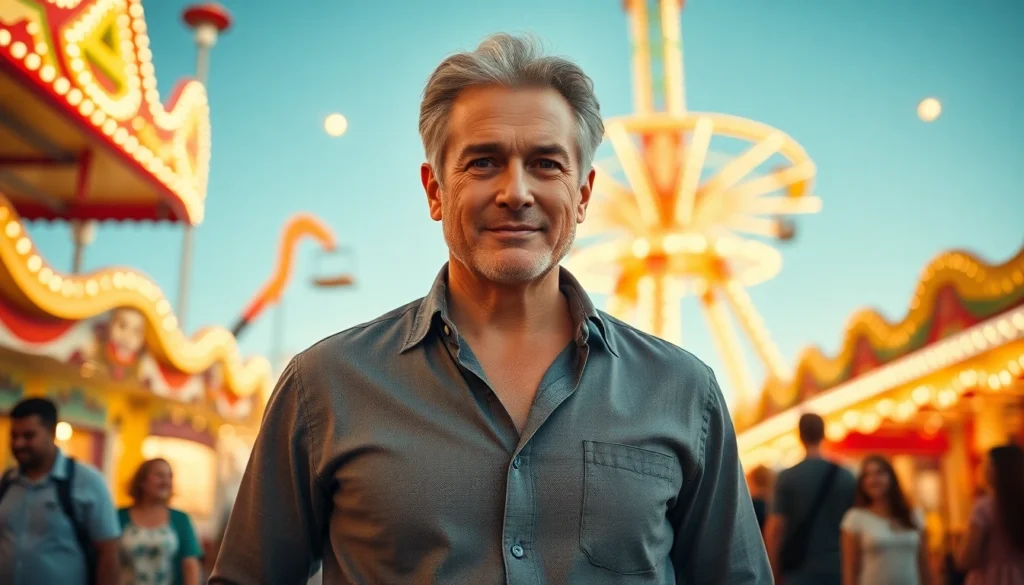
Introduction to the Term DILF: Origins and Meaning
The term DILF is an acronym that stands for “Dad/Daddy I’d Like to F*.” It’s a colloquial, often humorous, designation used predominantly in modern slang and pop culture to describe an older, mature man who exudes attractiveness and sexual appeal. Unlike the straightforward assumption that a DILF must be a biological father, the term is more flexible in its application, often highlighting a man’s maturity, confidence, and physical appeal regardless of his parental status.
The origins of the term can be traced back to the early 2000s, shortly after the popularization of the term MILF . While MILF gained notoriety through movies, television, and internet culture, DILF emerged as a playful, sometimes humorous counterpart, emphasizing a different aspect of attractiveness—namely, the appeal of older men who possess a certain rugged charm or masculinity.
Over time, DILF has evolved from a niche internet slang to a broader cultural phenomenon, being embraced in various contexts—media, social media, and even adult entertainment. Its usage often blends humor, admiration, and sometimes flirtation, making it a versatile term that continues to resonate in contemporary pop culture. Today, many fans, creators, and casual observers refer to DILFs with a mix of respect and humor, reflecting shifting perceptions of masculinity and attractiveness.
Popular Culture and Media Representations
Daddy Halsin in Baldur’s Gate
One of the most intriguing examples of the DILF phenomenon in popular culture is the character Daddy Halsin from the acclaimed video game Baldur’s Gate III. This character, renowned for his protective and commanding personality, has garnered a large fan following, many of whom affectionately refer to him as a DILF. His appearance—marked by a robust physique, mature demeanor, and a sense of strength—aligns with the typical attributes associated with the term.
Fans often comment on his looks and personality, appreciating the combination of rugged masculinity and nurturing qualities. The nickname “Daddy Halsin” exemplifies how modern fandoms adopt affectionate, sometimes humorous titles for characters that embody traits associated with attractiveness and maturity. This phenomenon illustrates how the term DILF has transcended real-world contexts and become embedded in fan culture, especially in gaming communities.
Fred Andrews in Riverdale
In television, the character Fred Andrews from the popular Netflix series Riverdale epitomizes the DILF archetype for many fans. Portrayed by actor Luke Perry and later KJ Apa, Fred Andrews is depicted as a strong, dependable father figure with a rugged attractiveness that resonates with viewers. His calm demeanor, protective nature, and maturity contribute to his status as a DILF in the eyes of many fans.
Riverdale’s portrayal of Fred Andrews taps into the cultural appeal of older, mature men who balance strength with tenderness. The character’s popularity reflects a broader societal appreciation for masculinity that combines physical appeal with emotional intelligence. For many fans, Fred Andrews exemplifies the modern DILF—an attractive, mature man who embodies both strength and kindness.
Characters in Movies like American Pie
The American Pie franchise, particularly with its spinoffs like American Pie Presents: The Book of Love (2009), contributed significantly to the popularization of the DILF concept in mainstream media. In this film, a character named Rob’s father is depicted as a confident, attractive older man, embodying many of the traits associated with the term DILF.
This portrayal, often humorous and exaggerated, helped cement the idea that older men could be just as appealing and desirable as younger counterparts. The film’s comedic approach, combined with the character’s charm, helped normalize the DILF archetype in popular culture, making it part of everyday conversation and humor.
Internet Culture and Social Media Trends
DILFs of Disneyland Instagram Account
The advent of social media has played a pivotal role in shaping and expanding the DILF phenomenon. One notable example is the Instagram account DILFs of Disneyland, which boasts over 300,000 followers. This account features photos of DILFs enjoying family outings at Disneyland, capturing candid moments of men who fit the DILF mold.
This social media trend reflects a broader cultural appreciation for mature men who exude charm, confidence, and attractiveness in everyday settings. The account’s popularity highlights how the term DILF has become a badge of honor and admiration, celebrated publicly and humorously. It also underscores how internet culture often blends humor with genuine admiration, creating a sense of community among fans and followers.
r/DILFs Reddit Community
Another significant online space dedicated to DILFs is the Reddit community r/DILFs, which has amassed nearly 100,000 members. This NSFW subreddit serves as a hub for sharing photos, videos, and discussions centered around DILF content. Members often post pictures of attractive older men and engage in conversations about masculinity, attractiveness, and personal preferences.
The community exemplifies how the term DILF has grown beyond casual slang into a dedicated online subculture. It provides a space for both admiration and humor, with many users appreciating the aesthetic qualities and personality traits that define a DILF. The subreddit’s popularity highlights the widespread appeal of older, confident men in contemporary internet culture.
The Cultural Shift: From MILF to DILF
Changing Perceptions of Attractiveness and Maturity
The transition from MILF to DILF reflects broader societal shifts in perceptions of attractiveness and maturity. Historically, youth was often associated with beauty and desirability, but modern culture increasingly values the qualities that come with age—confidence, experience, and a sense of stability.
In this context, older men who take care of themselves and exude masculinity are celebrated. The DILF archetype challenges traditional notions that only young men are desirable, instead highlighting that attractiveness can be found in maturity, strength, and self-assuredness.
Humor and Compliments in Modern Slang
The playful nature of the term DILF allows it to function both as a compliment and as humor. It’s frequently used in a teasing manner, often in social media posts or casual conversations, to praise a man’s attractiveness while acknowledging his age or maturity. This duality—combining humor with genuine admiration—makes the term versatile and widely accepted.
Moreover, the humor associated with DILF often serves as a way to celebrate masculinity without the rigid stereotypes of traditional masculinity. It embodies a modern, more inclusive appreciation for different kinds of attractiveness and confidence levels among men.
DILF in Pornography and Search Trends
Popularity as a Search Tag
The term DILF has become a popular tag within adult entertainment and online searches. Its rise in popularity can be attributed to the desire for more diverse and realistic representations of attractiveness, including older men who defy conventional youth-centric ideals.
Search trends indicate a significant increase in interest around DILF-related content, with many users seeking videos, images, and categories explicitly labeled with the term. This surge not only illustrates the demand for DILF content but also reflects a broader cultural acceptance and celebration of masculinity in all its forms.
Impact on Adult Entertainment Industry
Adult entertainment producers have responded to this trend by creating specialized content featuring DILF performers. This has led to a diversification of content, with more mature men gaining prominence in the industry. The popularity of DILF tags and themes has also encouraged mainstream producers to include older, attractive men in their projects, further normalizing and popularizing the archetype.
The rise of DILF content has not only expanded the options available to consumers but also challenged stereotypes about aging and attractiveness, fostering a more inclusive perspective on male desirability.
Conclusion: The Future of DILF in Pop Culture and Internet Trends
As the landscape of pop culture and internet phenomena continues to evolve, the DILF archetype is poised to remain an influential and celebrated figure. Its journey from niche slang to mainstream recognition signifies changing attitudes toward masculinity, attractiveness, and maturity. The playful yet respectful appreciation for older men—whether in media, social media, or adult entertainment—embodies a broader cultural movement towards inclusivity and diversity in perceptions of desirability.
The ongoing popularity of DILFs in various forms of media and online communities suggests that this trend will continue to grow, adapting to new contexts and audiences. With more representation and acceptance, the DILF archetype is likely to become an enduring symbol of confidence, strength, and attractiveness in modern culture.
For those interested in exploring this phenomenon further, the dilf crushon.ai provides comprehensive insights into the cultural significance, history, and current trends surrounding DILFs today.



